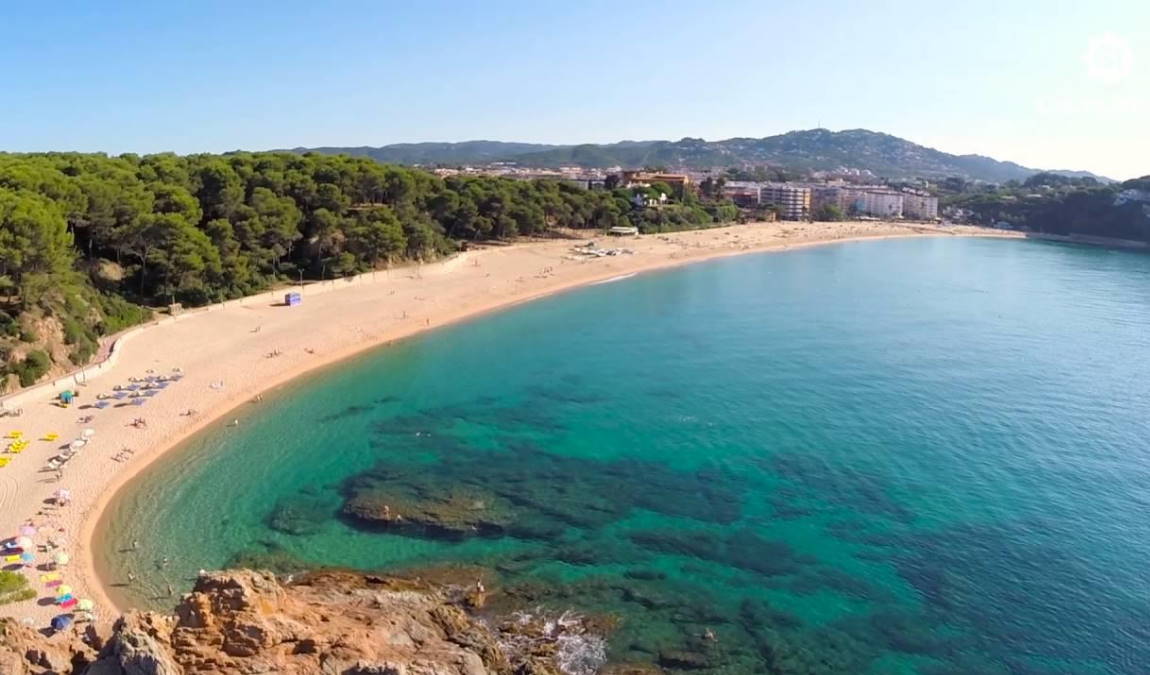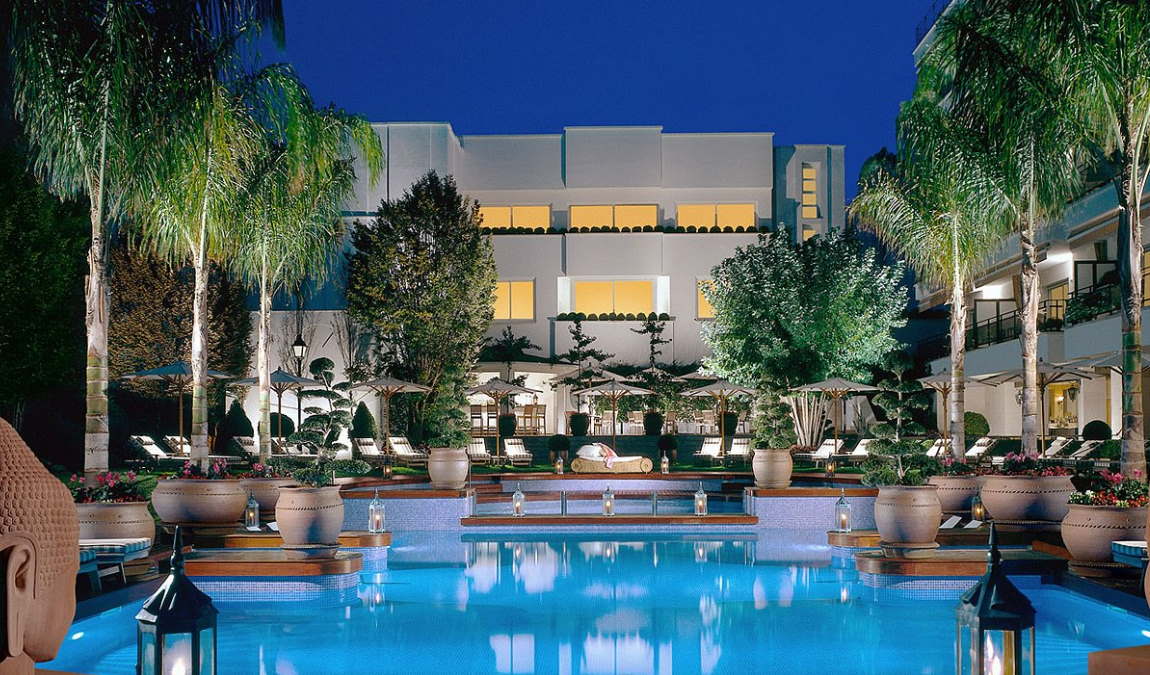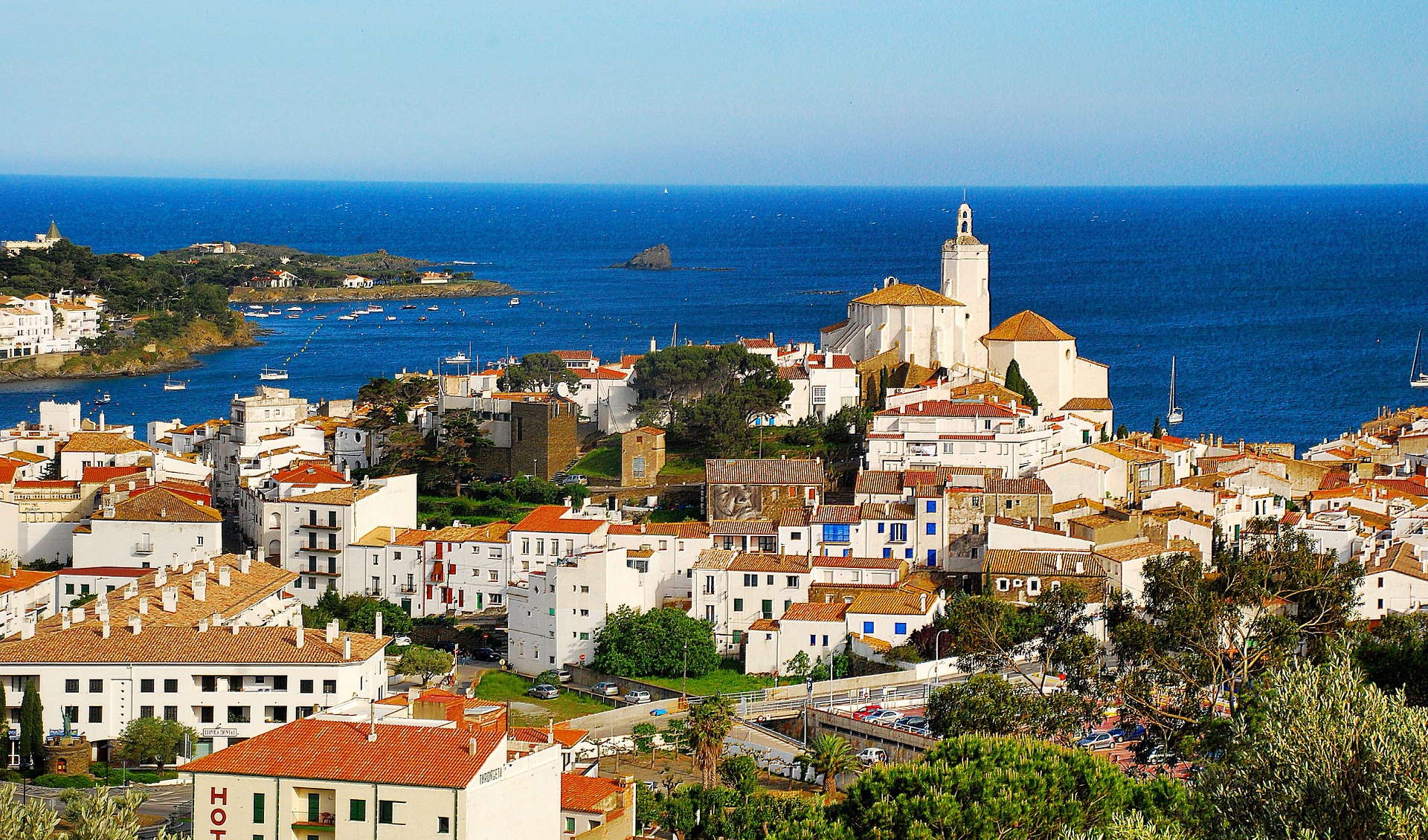Throughout the tourist season, the resort areas of the Costa Brava compete for the beauty of landscapes and resources. A characteristic feature of the coast is its picturesque nature, protected in the territories of nature reserves, available in botanical gardens, on perfect beaches and mountain ranges.
The Costa Brava is also history and culture, rich and impressive. At every step, one can feel the breath of all times, from antiquity to the present day. The hospitability of the Catalans and their culinary skills delight everyone. The traditional cuisine consists of seafood and land products, thus reflecting the dual nature of the entire coast.

Holidays on the Costa Brava in July: pros and cons
Costa Brava welcomes much more international tourists in July than any other Spain region. Overland tourist traffic is growing yearly, along with traffic via Girona airport and seaports. Tens of thousands of people disembark from cruise ships in Palamos and Roses.
The Costa Brava is a popular holiday destination for people from Germany, France, Benelux and Scandinavia, and Spaniards from other regions. It is in July that statistics shows a record attendance.
Popular cities are filled with young people, who usually stay in campsites, hostels, rural houses, and flats of friends and acquaintances. The Costa Brava attracts young people primarily because of its stunning scenery for Instagram photos.
Due to the gentle weather conditions, many retirees and families with children can be found in the resort even in mid-summer.
The following trend has emerged in recent years: tourists increasingly prefer self-organized holidays, avoiding buying package tours. Therefore, more than ever, the service for renting apartments with a kitchen is rising.
So, let's name the advantages:
- warm, clean sea;
- absence of exhausting heat;
- functioning of the summer tourist infrastructure at the maximum of possibilities;
- the widespread holding of music festivals and other colourful events of the year;
- a month of global summer sales;
- huge selection of fresh seasonal products.
The disadvantages of travelling to the Costa Brava in July are as follows:
- short-term deterioration in weather conditions is likely;
- more busy and noisy popular tourist destinations;
- high seasonal holiday prices.
Even single negative reviews about holidays in Costa Brava in July end with the phrase: "But the people, the sea and Catalonia are beautiful".
Weather in Costa Brava in July
The weather in July has all the characteristics of a moderately hot and dry summer. In August, the second month of the high season, there are similar weather phenomena to July. The average temperature is slightly higher.
The weather in early July is often low cloudy or overcast, with one or two heavy rains or summer thunderstorms. Winds from the south are moderate, giving sufficient wind draft for windsurfing.
Daytime temperatures in the Costa Brava in mid-July regularly reach +30°C. Nights are warm, with temperatures never dropping below +18 °C, even on the coldest summer days.
At the end of July, the weather in the Costa Brava does not differ much from the middle of the month, except that there may be more clear days.
Air and water temperature
The temperature in the Costa Brava in July reaches high levels. The month is one of the warmest of the year. The sea accumulates the maximum possible warmth yearly in the middle and end of summer. Mountain ranges influence the climate of the coast. So, as the temperature rises, water evaporates more vigorously and, lingering in the mountains, spills back as rain. After that, the air becomes cooler.
Air temperature in Costa Brava in July
The average daily temperature (+27.8 °C during the day and +20.7 °C at night) is comfortable and well tolerated by children, older people and adults.
Sea temperature in Costa Brava in July
The sea waters in this region warm up slowly, from +21.6 °C at the beginning of the month to +24.3 °C by the end. The average water temperature is +22.3 °C.
Precipitation
July is the driest month of the year. The portion of precipitation is 16.6 mm, which guarantees at least one rainy day.
Sunny, cloudy and overcast days
The sun shines 27 days a month on clear, cloudless or low cloudy skies, giving an average daily sunshine of 12.9 hours, with daylight hours up to 15.2 hours. Cloud cover is possible for two days or more.
Active holidays
Thanks to nature and the care of the authorities, Catalonia offers excellent conditions for many outdoor activities. There is a network of thousands of kilometres of signposted trails for hiking. For cycling, there are 120 more than 2300 km routes for holidaymakers of all ages.
The area around the Medas Islands is an ideal place for scuba diving. Even in bad weather, there are tourist boats with portholes built in below the water level.
Kayaking, rafting, horse riding, hang gliding, canoeing, gliding, glider or hot air balloon rides and many more activities are on the list.
More than a thousand rural tourism bases allow you to spend your holidays in close contact with nature, combining sports activities (trekking, horse riding, donkey riding) and rural life. Those who wish to do so can get acquainted with local traditions and folklore, agricultural production, and places of interest. Hunting and fishing opportunities are available in season.
Sea fishing for professionals and amateurs is possible all year round. And during Sailing Costa Brava week, the ports of the Costa Brava offer meager prices for all services.
The rich waters provide fishermen with catches of small and large fish, three-metre eels and other sea creatures. The ports establish almost round-the-clock operations at the beginning of July, with no weekends or public holidays.
Tour holidays
Much of Catalonia's architectural and artistic heritage was formed during the Middle Ages. From the valleys in the Pyrenees, examples of Romanesque art can be found throughout the country.
Among the medieval monumental cathedrals in the former centres of influential Catholic dioceses, the cathedrals of Girona stand out. There are also famous museums and the Jewish Quarter as part of the ancient city.
Besalú, a picturesque town on the river Fluvia, across which the inhabitants have been crossing on a marvellous Romanesque bridge for ten centuries, has not changed at all since ancient times.

The Eiffel Bridge on the Oñar River is famous after its creator, who built the tower of the same name in Paris. Palamos, Sant Feliu de Guixols, Lloret de Mar, Roses and Begur are towns with centuries of history and rich artistic heritage.
They have been transformed from ordinary fishing villages into vital centres of culture and tourism. Lloret de Mar has the most tourist-favourite attractions and entertainment centres.
Cadaqués, Tossa de Mar and El Port de la Selva are associated with the memory and work of world-famous artists. Palsa and Peratallada are home to some of the most beautiful medieval castles.
Salvador Dalí's works belong to the cultural heritage of modern times. The theatre-museum, one of the three objects of the "Dalí triangle", is in Figueres. The museum building is a masterpiece of urban architecture.
The Open Museum (MOLL) for children in Lloret de Mar has an interesting concept: guided tours are theatre performances.
Beach holidays
In mid-July, the bathing season is no longer hampered by strong winds. The seawater, cool by equatorial standards, is still very pleasant. During this period, it is clear and jellyfish-free.
When choosing a resort and beach holiday destination, you should take into account some of the north-south landscape of the Costa Brava.
The northernmost coastline is predominantly rocky, but long sandy beaches are also in the resorts further south in L'Estartit, Playa de Aro and Palamos. They are well-equipped but quieter, with fewer holidaymakers. Tossa de Mar's coastline consists of interspersed cliffs, rocks, caves, caverns and bays. Some of the coves are very comfortable, with soft sand underfoot.
The popular resort of Lloret de Mar is both a youth and party destination and a place for families with children.
The spacious sandy flat areas with extensive recreational facilities are famous and busy. The beaches of Fenals and Lloret attract visitors, while Santa Cristina, Cala Canellas, Boadeia, Sa Caleta attract locals.

The southern gateway to the Costa Brava is the much-loved Blanes. The natural architectural marvel of Sa Palomera Rock stands in the sea, while the coastline is lined with beautiful botanical gardens surrounding five luxurious sandy beaches.
Playa de Blanes and Sabanel are better known amongst tourists and are more spacious. The Cala Bona and Treumal beaches are secluded and cute but little known. The sea on the southern shores is calm and shallow. Children stay free of charge in municipal beach mini clubs with inflatable slides and entertaining activities under the supervision of experienced instructors.
Puppet shows, musical performances and fairy tale dramas are organised three times a week in the mini-clubs for kids in Roses. On the beaches in Blanes at the end of July, there is a fair with children's attractions.
Holidays, events and festivals
The festivities on the Costa Brava in July are predominantly musical and religious. Regional events focus on local traditions.
Open-air concerts are held in many localities from the beginning of summer. In Verges, the Evenings Under the Bell Tower begins. In addition to musical concerts, foam shows and dance classes are organised for children.
On the first Saturday of the month, in Portbo Bay in Calella de Palafrugell, people gather at sea on ships and ashore to listen to the songs of the habanera sailors.
The small village with white cottages is just suitable for the event.
Popular songs such as "Beautiful Laura" and "My Grandfather" are sung by numerous guests in chorus. On 19 July, in Calella de Palafrugell, there is a patronal feast.
In the botanical gardens of the same town, surrounded by a magnificent castle, the internationally famous music festival "Gardens of Cap Roig" takes place during the summer months. It is one of the world's top ten outdoor summer festivals. The Castell Peralada Festival also allows you to enjoy the multifaceted art of opera, theatre, ballet and flamenco dancers.
Festival de la Porta Ferrada, Spain's oldest summer music festival, has numerous venues in all corners of San Feliu de Guixols. It coordinates other music festivals, particularly in Barcelona and Madrid.
Supporting classical music is the concept behind the Torroella de Montgri festival held in the royal village.
In mid-July, fishermen honour Our Lady of Carmen at coastal points. Most of the time, some processions start on land and continue on the sea. An image of the Virgin is placed on a specially decorated ship.
In Lloret de Mar, on July 24, there is a feast in honour of the city's patron saint — Saint Christina. The oldest custom and culminating event is the Ball de Plaça or Dansa de les Almorratxes, a traditional dance held every year on 24th and 26th July in Plaza de la Vila of Lloret de Mar. It is performed by four couples. The men dance in tuxedos, and the girl's twirl in white dresses similar to wedding dresses. During the dance, the partners present the girls with jars of flowers and scented water, which are then smashed on the pavement.
July 25 in Spain is declared a day off in honour of the St. James the Greater, who is considered to be the heavenly patron saint of the whole country. On this day, there is a mass pilgrimage to Santiago de Compostela, where the saint's remains were found. After Jerusalem and Rome, this place is the third most important for Catholics.
On July 26, Blanes and L'Estartit celebrate their patronal feast in honour of Saints Anne and Joachim. Many small villages along the coast honour their patron saints on these two days.

During the last week of the month, Blanes hosts the International Fireworks Competition. Around Sabanel Beach, the night sky explodes noisily with lights. The fireworks are launched from the rock of Sa Palomera. The number of spectators at the festival reaches almost 100 000 people.
The festival dedicated to the myth of Count Arnau takes place in San Joan de les Abadeses every year in July and August. It includes dance, music and theatre performances, events such as a medieval market and dinner show with dishes based on medieval recipes, and night-time theatrical excursions.
The play "Count Arnau" and other famous plays are performed in the town monastery and the abbey palace.
For shopaholics, the month's main event is the start of the summer sale season, which runs from 1 July to 31 August.
Cost of vacation
In July, prices in the Costa Brava usually increase in all areas except air travel. The closer you get to the sea, the more pronounced the tendency for accommodation costs to rise.

Package Tours
Short-term tours to Spain in July become very expensive, sometimes up to 30-60% more expensive than in June. In any case, at this time, they are among the most expensive of the year.
Accommodation
In July, the average cost of hotel rooms in resort towns rises to 30-55% of the June price level; it almost reaches the annual maximum. In the airport area, the cost of accommodation this month may even decrease.
Airfares
In July, airfares are down 15% compared to the previous month. Budget companies often mention Girona Airport in their low-cost offers.
Food and Transport
Lunch at an inexpensive restaurant on the coast costs a minimum of €11. The cost of non-alcoholic and low-alcoholic drinks ranges from 1.1-3.0 euros for a small bottle or a cup of drink in a café.
In supermarkets, prices for fruit and vegetables reach €2-8 per 1kg, while in markets, they are half the price. Seasonal sales offer discounts of up to 70% off the original cost.
Transfers from Girona Airport to Lloret de Mar cost around €30 and Calella and Tossa de Mar from €37. The most popular guided walking sightseeing tours are priced at a minimum of €15, while bus tours cost €35 per person.
- What to Eat in Spain — 48 Spanish Foods You Must Try
- Spanish Fruit and Vegetables — A Seasonal Guide
Tips for holidays with children
Gentle July weather conditions make taking even small children on summer holidays possible. However, it is better to avoid hiking in the midday hours. You should choose the beach carefully, as many different beaches are on the coast. Maximum protection from the sun is required, and a rain umbrella will also come in handy.
The family resorts of the Costa Brava have an elaborate children's entertainment infrastructure, both paid and free, and specially equipped places in hotels and catering establishments.
In addition to famous natural gardens, aqua-, zoo-, moon- and adventure parks, and dolphinariums, there are many playgrounds for children and beach clubs with animators.
There are creative and sports hobby groups. Any event, in particular fairs, has a child-oriented component.
In popular cities, municipalities provide adapted excursions for children. It considers the distance, which should be a 15-minute drive from the gathering place. Many interesting sights and museums are located in the city limits.
Among the means of transport, you can use the services of a tourist tram or rental of children's bicycles, boats, and scooters. The character of cities also differs: there are settlements with calm, almost sleepy atmospheres, and there are more active and cheerful cities.
In any case, both adults and children will be delighted with Spain. In July, it is impossible to get bored when everything revolves around the tourist. And to thoroughly explore the country and its wonderful opportunities, even two weeks will not be enough.
It is the minimum period you can and should form a complete impression of the country. As the guides say, "You will come back to Spain again; it is so different and so beautiful".






